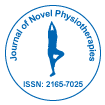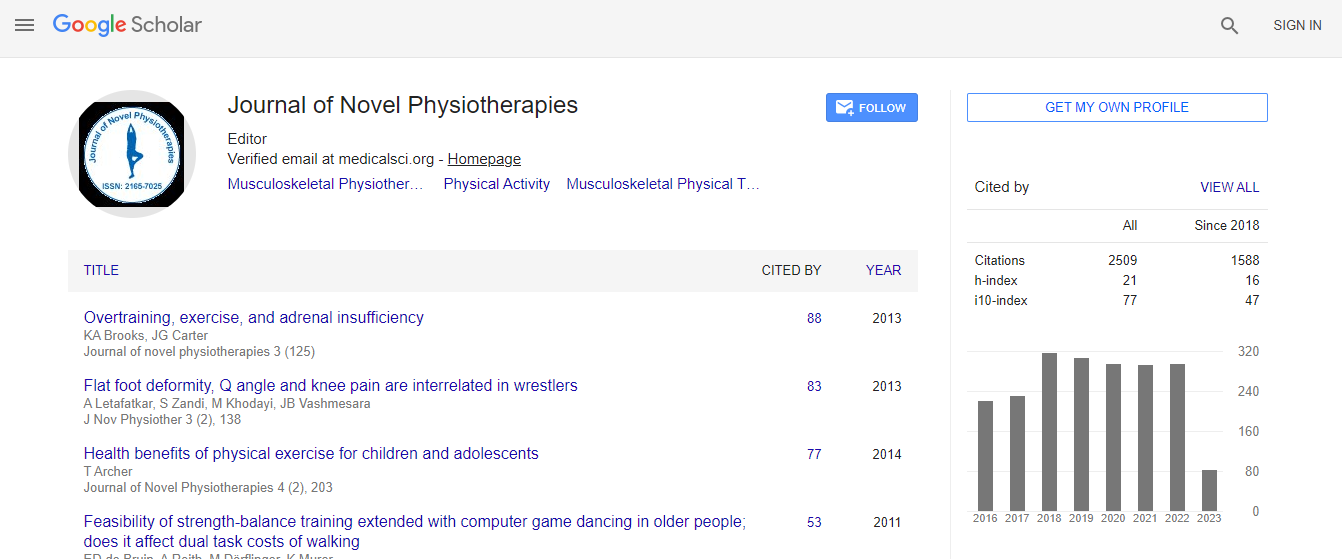Research Article
BioDensity: A Novel Resistance Training Approach and Learning Effects in 1,685 Males and 2,689 Females
| Derek T Smith1,2*, Rebecca A Moynes1,3, Shawn S Rockey1, Jason Conviser4 and James S Skinner5 | |
| 1Division of Kinesiology and Health, University of Wyoming, Laramie, Wyoming 82071, USA | |
| 2Department of Zoology and Physiology, University of Wyoming, Laramie, Wyoming 82071, USA | |
| 3Department of Kinesiology, Laurentian University, Sudbury, ON P3E 2C6, USA | |
| 4JMC and Associates, Chicago, IL 60022, USA | |
| 5Professor Emeritus, Department of Kinesiology, Indiana University, Bloomington, IN 47405, USA | |
| Corresponding Author : | Derek T Smith Division of Kinesiology and Health College of Health Sciences, University of Wyoming Department 3196, 1000 E. University Ave Laramie, WY 82071, USA Tel: (307) 766-5271 Fax: (307) 766-4098 E-mail: smithdt@uwyo.edu |
| Received March 27, 2014; Accepted May 16, 2014; Published May 18, 2014 | |
| Citation: Smith DT, Moynes RA, Rockey SS, Conviser J, Skinner JS (2014) BioDensity™: A Novel Resistance Training Approach and Learning Effects in 1,685 Males and 2,689 Females. J Nov Physiother 4:215. doi: 10.4172/2165-7025.1000215 | |
| Copyright: © 2014 Smith DT, et al. This is an open-access article distributed under the terms of the Creative Commons Attribution License, which permits unrestricted use, distribution, and reproduction in any medium, provided the original author and source are credited. | |
Abstract
Traditional Resistance Training (RT) using free-weights or cable-pulley machines has well-documented health, rehabilitation, and activity of daily living benefits. RT is commonly prescribed for primary/secondary prevention of osteoporosis, sarcopenia, cardiopulmonary diseases, and balance/locomotion impairments. Insuring safety and efficacy of RT programs often requires supervision and can be costly and time intensive. Technology is constantly reshaping modes and RT, and in 2009, bioDensity™ was developed and marketed internationally. Developing a safe and efficacious mode of RT that induces multiple body weight loading to the musculoskeletal system underpinned bioDensity™ development. High-intensity loading is one mechanism to induce therapeutic bone remodeling which is foundational to attenuating osteopenia and osteoporosis. With traditional RT, it is difficult to safely elicit high osteogenic loads (multiples of body weight), and for at-risk populations, moving such loads through a full range of motion may not be possible or prudent. BioDensity™ is novel and warrants researching for several reasons. It is lowvolume: four exercises, once per week, 5-seconds per contraction (low time commitment). It is high-intensity: users exert voluntary-maximal force for each exercise and exercises target common osteoporosis sites. Safety is achieved through individualized positioning that is near optimal joint angles for maximal force production. Force is generated through a limited-range – approximately 5 cm – and is measured via load cells and patented software. Users receive real-time visual feedback about force generation to promote and prompt a maximal effort during subsequent training sessions. The potential implications and applications of bioDensity™ RT are broad and clinically-significant; however this methodology has not been introduced to the scientific/clinical communities to generate rigorous research. Accordingly, the purpose of this communication was to first introduce this novel mode of RT and then report on a large cross-sectional data set that informed recommendations for handling sex-difference learning effects inherent with this unfamiliar mode of RT.

 Spanish
Spanish  Chinese
Chinese  Russian
Russian  German
German  French
French  Japanese
Japanese  Portuguese
Portuguese  Hindi
Hindi 
